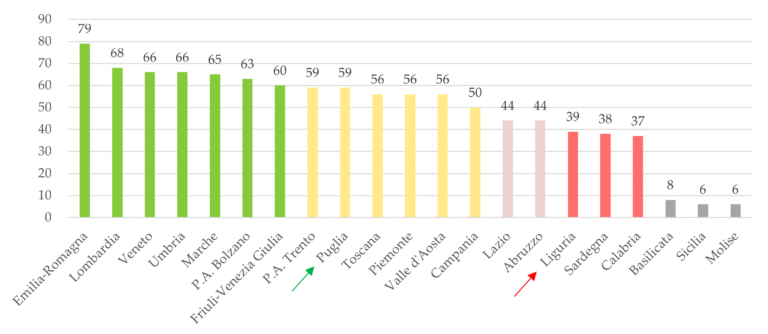However the challenge between Stefano Bonaccini and Lucia Borgonzoni to become governor goes, Emilia-Romagna will probably continue to function well and be one of the benchmark regions for account management and the services provided. But even in Calabria, in last place for services to citizens, the result of the vote on January 26 will probably change little. «What makes the difference on the efficiency of services and the quality of spending, which are the indicators that guide citizens' choices and above all attract investments, is the structure of the administration», says Paola Caporossi, founder and vice president of Ethics Foundation. And it draws an x-ray of the overall functioning of the two Regions grappling with the renewal of the Regional Council. The comparison starts from the 2018 re-elaboration of the homogeneous data that each Region is obliged to publish thanks to the "transparency decree", with the Esg public sustainability rating methodology, an index which, in addition to economic-financial management, also considers governance, personnel management, services, contracts and suppliers, environmental impact, according to ESG principles.
The first fact that emerges is that Emilia-Romagna is well administered, especially in a comparative key: it is in fact second in the ranking of ordinary statute regions with 71 points, after Lombardy and Tuscany, paired in first place with 75 points. "A figure that seems to take away the cause of differentiated regionalism, given that even the autonomous provinces of Bolzano and Trento have a lower qualitative ranking (68 and 67 respectively)", explains Caporossi. At the bottom are instead Basilicata (33 points), Calabria (31) and Molise (19). But Emilia, which also uses EU funds very well, leads the ranking for the budget area (92 points), overtaking Lombardy (78) and Tuscany (77), while Calabria is again penultimate (44) , before Molise (36).
However, Emilia-Romagna also has areas for improvement: for example, it is the Region that "loses the most on its real estate assets". While they are the sectors subjected to greater control, which allow Calabria to «perform better and bring it closer to sufficiency (budget and procurement management). But in services and in the relationship with citizens it plummets to 12 points (out of 100).
(Corriere della Sera – 18 January 2020)



